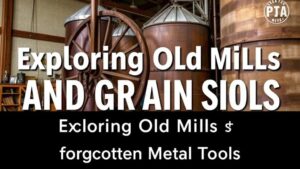Spotting Rock Art and Tool-Making Debris in Canyon Overhangs
Spotting Rock Art and Tool-Making Debris in Canyon Overhangs
Canyon overhangs present unique archaeological opportunities, serving as prime locations for rock art and tool-making debris. Understanding how to identify these features requires a comprehensive exploration of geological formations, artistic methods, and lithic technology. This article delves into the criteria for spotting rock art, the characteristics of tool-making debris, and the significance of these findings in understanding prehistoric human behavior.
Understanding Rock Art
Rock art refers to images created by the enduring imprint of human creativity, often manifested as petroglyphs (carvings) and pictographs (paintings). e artworks provide insight into the cultural and spiritual lives of ancient peoples. Recognizing rock art in canyon overhangs involves several key factors:
- Location: Overhangs offer natural protection from the elements. The locations are often chosen based on visibility and accessibility. Many artists selected walls facing canyons or open vistas.
- Material: Common materials used for rock art include iron oxide and charcoal for pigments, while the rock substrate often consists of sandstone or granite, which allows for easier carving and painting.
- Style and Technique: Identifying styles can provide clues about the period of creation. For example, the Ancestral Puebloans, known for their intricate designs, often utilized a combination of geometric forms and anthropomorphic figures.
For example, the rock art found in the Grand Canyon National Park displays the work of various cultures over thousands of years, highlighting shifts in artistic expression and ideology. A case study at the Petroglyph Point reveals over 1,500 separate engravings, showcasing the evolution of style from simple geometric shapes to complex narratives.
Recognizing Tool-Making Debris
Tool-making debris, which includes flint flakes and cores, signifies the presence of prehistoric activities. Identifying these remnants necessitates an understanding of lithic technology:
- Flake Characteristics: Debris typically contains sharp-edged flakes. The size, shape, and striking platform are all indicators of the type of tool being produced. For example, larger flakes are often associated with the initial stages of tool reduction.
- Core Analysis: The core is the original stone from which flakes are struck. Identifying the cores features, such as its degree of weathering or the number of strikes, can suggest the skill level and technique of the toolmaker.
- Context: The location of debris (e.g., near water sources or sheltered areas) can provide clues about the lifestyle and survival strategies of the individuals who created them.
Case studies from sites like the Chiricahua National Monument reveal extensive lithic scatters associated with tool-making. Archaeological excavations in this area have uncovered thousands of flakes, illustrating the methods of the prehistoric inhabitants who relied on these tools for survival.
The Significance of Findings
Spotting rock art and tool-making debris extends beyond mere identification. These findings are critical in piecing together the narrative of human history:
- Cultural Insights: Rock art serves as a window into the belief systems, rituals, and daily lives of ancient peoples. Understanding the symbols used can aid in cultural preservation.
- Technological Advances: Tool-making debris can indicate the progression of technology through time, revealing shifts from simple to more advanced methods of resource handling.
- Environmental Interactions: The locations of these artifacts often reflect the relationships ancient peoples had with their surrounding environment, including resource management strategies.
For example, recent research in Canyonlands National Park has demonstrated how rock art and tool-making sites correlate with the sustainability practices of early Native American societies, shedding light on their ecological knowledge.
Conclusion and Actionable Takeaways
To wrap up, spotting rock art and tool-making debris in canyon overhangs requires a multifaceted approach that includes a keen eye for detail, a sound understanding of historical context, and an appreciation for both the aesthetic and practical aspects of prehistoric life. Researchers and enthusiasts can enhance their fieldwork through the following actionable steps:
- Participate in Workshops: Engage with local archaeological societies or institutions offering workshops on rock art identification and lithic analysis.
- Document Findings: When spotting such artifacts, utilize photography, sketching, and written notes to document locations and characteristics for future reference.
- Collaborate with Experts: Partner with archaeologists or anthropologists to deepen interpretative insights and contribute to larger investigations within the community.
By taking these steps, individuals can contribute meaningfully to the preservation and understanding of rock art and tool-making heritage within canyon systems.

